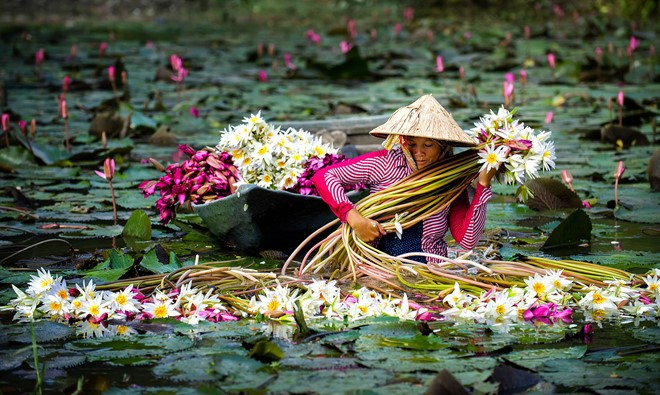Mekong Delta Vietnam: Must-See Attractions & Travel Tips
The Mekong Delta Vietnam is a vast, lush region in the southern part of the country, often referred to as the “Rice Bowl” of Vietnam. Known for its winding waterways, floating markets, and rich cultural tapestry, the Mekong Delta offers travelers a unique glimpse into rural Vietnamese life. If you’re looking for a destination that combines natural beauty, authentic local experiences, and unforgettable adventures, the Mekong Delta is a must-visit.
Discovering the Mekong Delta Vietnam
The Mekong Delta begins where the mighty Mekong River meets the South China Sea, fanning out into a maze of distributaries. Covering over 40,000 square kilometers, this delta is home to rice paddies, fruit orchards, mangrove forests, and some of the most hospitable communities in Vietnam.
Best Time to Visit the Mekong Delta
The climate in Mekong Delta Vietnam is tropical, with two main seasons: the dry season (December to April) and the wet season (May to November). While both seasons offer unique experiences, the dry season is ideal for sightseeing and boat trips, as the weather is generally sunny and pleasant.
Must-See Attractions in Mekong Delta Vietnam
1. Cai Rang Floating Market – Can Tho
No trip to the Mekong Delta Vietnam is complete without visiting the Cai Rang Floating Market in Can Tho. This bustling market takes place on the water, with boats laden with fruits, vegetables, and local goods. Vendors display their products on bamboo poles, creating a colorful and lively scene. Early morning visits offer the best experience, as the market is most active between 5:00 AM and 9:00 AM.
2. Ben Tre – Coconut Capital
Ben Tre is often called the “land of coconuts” and is famous for its coconut candy factories, lush orchards, and traditional handicrafts. A boat tour here takes you through small canals shaded by nipa palms. Visitors can explore village life, enjoy local dishes, and watch artisans at work, making everything from mats to rice paper.
3. Tra Su Cajuput Forest – An Giang
For nature lovers, Tra Su Cajuput Forest in An Giang Province is a serene paradise. This flooded forest is rich in biodiversity, home to countless bird species and aquatic life. A boat ride through the green, algae-covered waterways offers a peaceful, almost magical experience.
4. Vinh Trang Pagoda – My Tho
Located near My Tho, Vinh Trang Pagoda is one of the largest and most beautiful Buddhist temples in the Mekong Delta. The pagoda features a blend of Chinese, Vietnamese, and Khmer architectural styles, with ornate details and massive Buddha statues. It’s a peaceful place for reflection and photography.
5. Floating Villages – Chau Doc
Chau Doc is known for its ethnic diversity and floating villages along the river. Take a boat trip to visit these communities, including Cham Muslim villages, where you can learn about traditional weaving and enjoy local hospitality.
Cultural Experiences in the Mekong Delta Vietnam
Homestays and Village Life
One of the most rewarding ways to experience Mekong Delta Vietnam is by staying in a local homestay. Villages such as Vinh Long and Cai Be offer homestay experiences where travelers can participate in cooking classes, farming activities, and enjoy home-cooked meals. These stays provide insight into the everyday lives of delta residents.
Local Cuisine
The cuisine of the Mekong Delta reflects the region’s abundance of fresh ingredients. Don’t miss these must-try dishes:
Hu Tieu: A flavorful rice noodle soup with pork or seafood.
Ca Kho To: Braised fish in a clay pot with caramelized sauce.
Banh Xeo: Crispy Vietnamese pancakes filled with shrimp, pork, and bean sprouts.
Fresh tropical fruits: Including mango, durian, longan, and mangosteen.
Traditional Music and Dance
The delta is home to Don Ca Tai Tu, a traditional form of southern Vietnamese music recognized by UNESCO as Intangible Cultural Heritage. Attending a live performance during a river cruise or village stay adds a cultural highlight to your journey.
Travel Tips for Visiting Mekong Delta Vietnam
Getting There
The Mekong Delta is easily accessible from Ho Chi Minh City (Saigon), which is about 2–4 hours away by car or bus. Popular entry points include My Tho, Ben Tre, and Can Tho. You can also book organized tours that include transportation, meals, and guided activities.
Getting Around
Travel within the delta is best done by boat, motorbike, or bicycle. Many villages are connected by canals and narrow roads, perfect for slow exploration. Local ferries and boat taxis are common and inexpensive.
Packing Essentials
Lightweight clothing and a hat for the tropical climate.
Insect repellent, especially during the wet season.
Waterproof bags for your electronics when on boat tours.
Comfortable shoes for walking or cycling in villages.
Safety and Health
The Mekong Delta is generally safe, but here are a few tips:
Drink bottled water.
Be cautious when riding motorbikes or bicycles on narrow village paths.
Respect local customs, especially in religious and ethnic minority areas.
Responsible Travel in the Mekong Delta Vietnam
Tourism can positively impact the Mekong Delta if done responsibly. Support local businesses, stay in family-run accommodations, and avoid plastic waste during your travels. Always ask for permission before taking photos of people, and approach local cultures with respect and curiosity.
Conclusion
The Mekong Delta Vietnam is a captivating destination filled with natural beauty, vibrant culture, and warm-hearted people. Whether you’re gliding through floating markets, exploring lush forests, or sharing a meal with a local family, the delta offers a journey that is both immersive and unforgettable. With thoughtful planning and a spirit of adventure, your visit to the Mekong Delta will be a highlight of your time in Vietnam.
So pack your bags, bring your camera, and get ready to explore one of Southeast Asia’s most enchanting regions — the mesmerizing Mekong Delta Vietnam.
